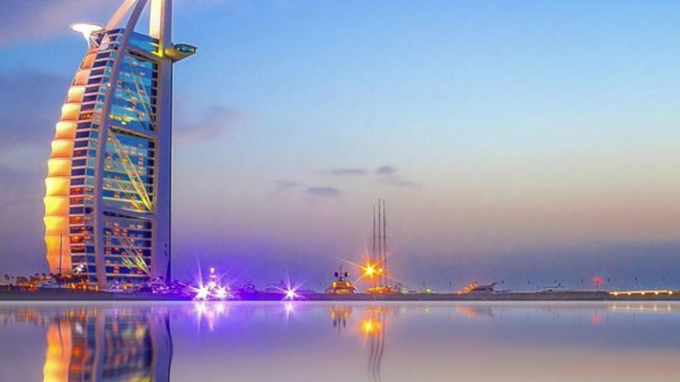In September 1965 the Slava fleet left Odessa for the Arabian Sea with much fanfare. It was the 40th anniversary of Soviet Ukraine, and the captains and commissars and harpooners aboard the various vessels were given a mission to mark the occasion: kill everything you find.
If the crewmembers exceeded their catch from the previous year, they would unlock a 60 percent bonus and could expect a heroes’ welcome on their return. Their success was measured in “poods”—a Russian unit equaling approximately 36 pounds—of whale oil rendered down from the blubber.
And so come November of that year, the Slava, buttressing the Sovetskaya Ukraina (the largest whaling factory ship ever), set sail for the Arabian Sea. The region had been closed to commercial whaling since the passage of the International Convention for the Regulation of Whaling in 1946, and humpbacks, specifically, had been protected since 1963. But who was to know that this ceticide was even occurring? Despite the documented depletion of marine mammal stocks in the Southern Hemisphere, the whalers’ objective was to be achieved at any cost. The Slava and Sovetskaya Ukraina dropped anchor, and the slaughter commenced.
Between 1948 and 1973, 180,000 whales were killed by Soviet
whaling operations.
The harpooners stripped down to shorts and spent four whole months belly-down on the decks, scanning the glaring horizon for a breach. They’d go after anything. A glittering spray in the distance could signal a blowhole, or it could be nothing. That didn’t matter; this was sport! And there were bonuses to be won. When their quarry was spotted, the harpooners bore down without mercy.
Between 1948 and 1973, 180,000 whales were killed by Soviet whaling operations. All species—blue whales, sperm whales, humpback whales and the critically endangered right whale—were targeted. Even mothers with calves were not spared. A full half of the nearly 200 female humpbacks recorded as caught (likely an underestimate) south of Oman that winter were lactating. An entire generation of Arabian whales was orphaned or, in some cases, sliced open alongside their mothers, gutted and left as carrion for the sharks who tailed the ships in massive shivers.

Still from Sophia Al-Maria, A Whale Is A Whale Is A Whale, 2014.
Though this crime is now well known, it has never been punished. Like so many things in obscure parts of the sea, it was invisible to us. And as with so many things in the past, it can be difficult to care. In this case the deliberate destruction of much of the documentation occulted this environmental catastrophe even further. What we know now is largely due to a secret stash of records kept by the scientist Dmitri Tormosov. He had instructed his colleagues on various whaling vessels to record every year’s catch in documents they called “whale passports.” He then hid these in his potato cellar despite the Soviet fisheries ministry’s orders to destroy this “classified” information at the end of each season. The International Whaling Commission had the foresight to write environmental protection laws to prevent the depletion of whale populations but not the resources to enforce said laws.
All anecdotal evidence from lifelong fishermen suggests one thing: that irreversible ecocide is afoot.
That winter in the Arabian Sea, as devastating as it was, is just a footnote to a centuries-long story of whaling for oil that foreshadows our suicidal addiction to fossil fuels. The Slava’s expedition did not mark the beginning but only a pivotal moment in the endangerment and now imminent extinction of the Arabian humpback whale—indeed, the extinction of everything in a short but total burst of human-induced mortality at the end of the Anthropocene.

Still from Sophia Al-Maria, A Whale Is A Whale Is A Whale, 2014.
In 2002 the cetologist Robert Baldwin noticed something odd about the vocalizations of a male humpback whale he was tracking off the coast of Oman. The language was different from that of other humpbacks, simpler or perhaps denser. He knew that the Arabian humpback is unique in that it does not migrate as other species do—it is born, lives and dies in the subtropical waters of the Arabian Sea. The difference in language among otherwise identical creatures can be attributed only to geographic isolation, suggesting an incredible truth—that their vocalization, like that of humans, is not innate but learned.
The origins of Arabian humpbacks are mysterious. Some believe them to be a remnant population, orphaned from a group that once lived in the Southern Hemisphere. At the time of Baldwin’s recording, which you can hear in the above video, 100 unique individuals had been identified. In 2008, 82 unique individuals were identified. Today it is unknown how many survive, as marine research in the Gulf is limited for both monetary and military reasons.
In the past decade the incidence of beaching has increased. Some suggest that the cause is the noise pollution from offshore drilling or military sonar. Fish are becoming smaller, reefs more brittle. All anecdotal evidence from lifelong fishermen suggests one thing: that irreversible ecocide is afoot.
This piece has been made possible, in part, by the Robert Rauschenberg Foundation.

